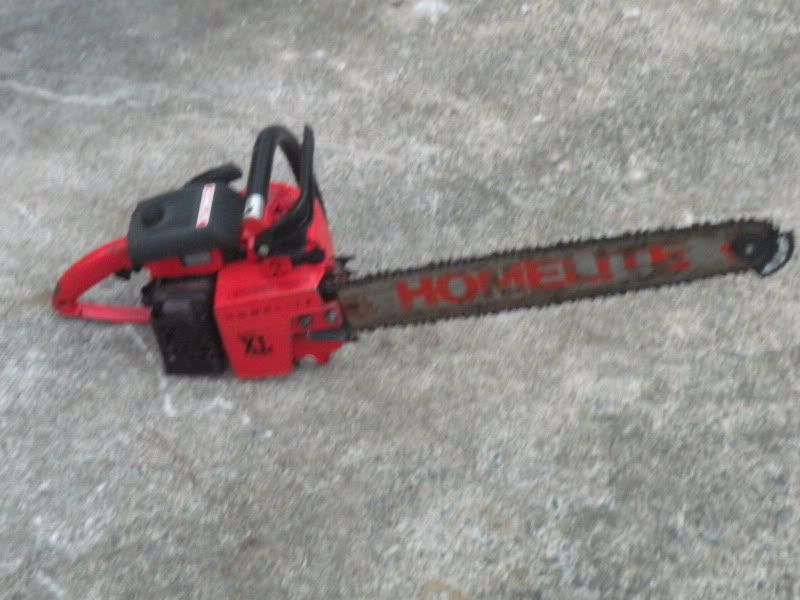Guido Salvage
Supreme Saw Whoreder
I bought several saws that had the safety tip on the end of the bar to prevent kickback. In fact my Homelite 540 (88cc's) came with one on a 20" bar when I bought it new. Here is the best picture I can find of one.




Stihl has a useful training video:
Reactive Force Events - Chain Saw Safety 7 - YouTube
Also, only my opinion, if you have a choice, use the smallest saw with the shortest bar to get the job done. Bigger saw and longer bar = bigger reaction if things go wrong and harder to control.
One good way to stay clear of kickback injuries:
keep all your pieces out of the plane of the chain.
The b&c will move (very rapidly) in the plane they are in. Bad place to be, very bad.
If you're not there, you might see it go by. :msp_rolleyes: Or, you might not.
It also helps to:
avoid monkey grip (keep thumb opposed to fingers on the front handle)
keep your left elbow locked straight
keep a grip on the rear handle
absolutely minimize time spent running saw left-handed (cannot keep everything out of the plane doing that)
test kickback mechanism on saw often, and repair problems ASAP.
Not a good idea to stand behind another sawyer, obviously. :msp_wink:
I don't fully agree with Philip's opinion, above. Low-kickback chain is sold on smaller displacement saws because they more likely to be used by less experienced consumers, but also because they are less able to resist reactive forces. All things equal, a heavier saw with a longer bar has more mass ahead of the operator's grip, and a larger engine is less likely to 'stall' (using the term from one of the videos).
Small, top-handled saws offer the least resistance to kickback due to the short distance between the user's hands (assuming two-handed use).
Seeing as I'm left handed and cut that way, would that mean that a lefty would more often than not be on the same plane as the bar thus be in more potential danger than a right handed person?
Enter your email address to join: